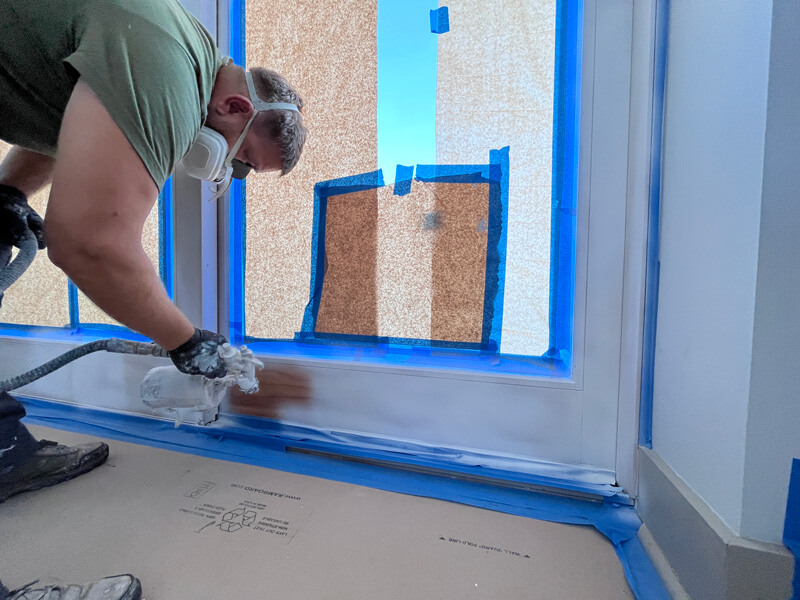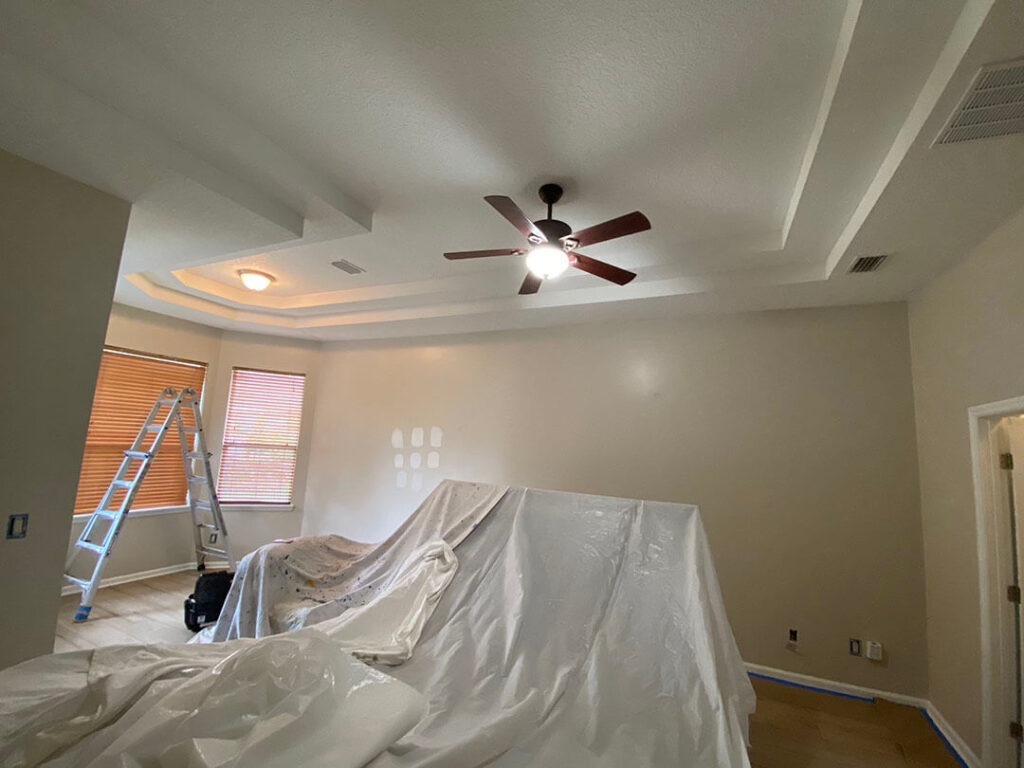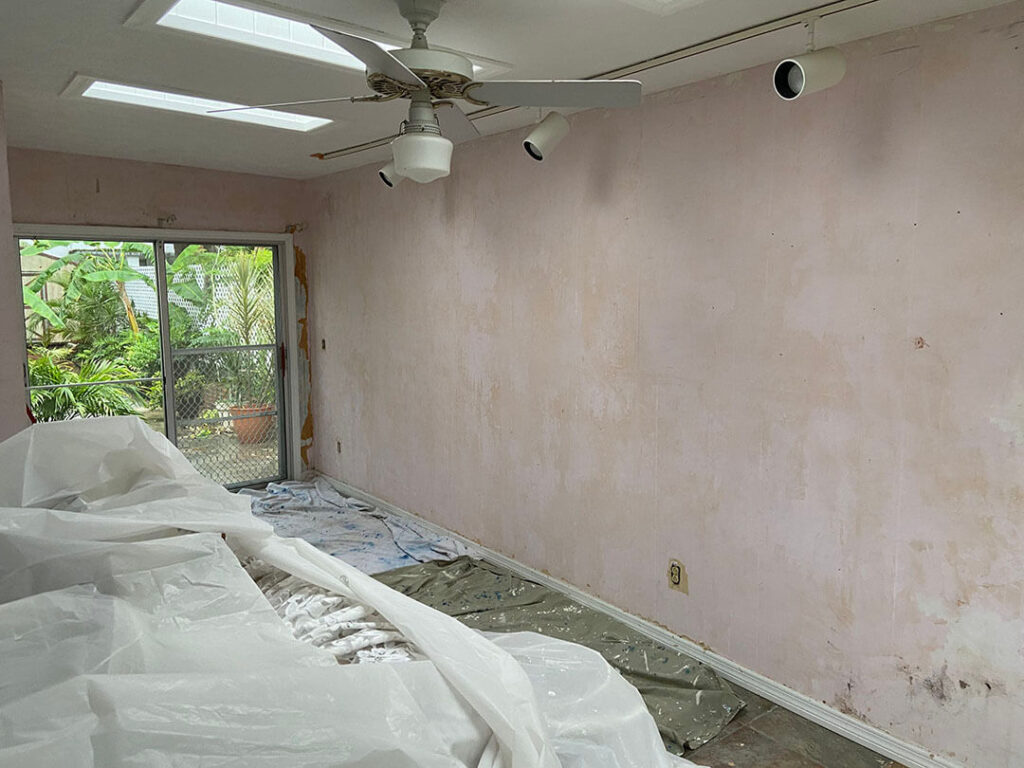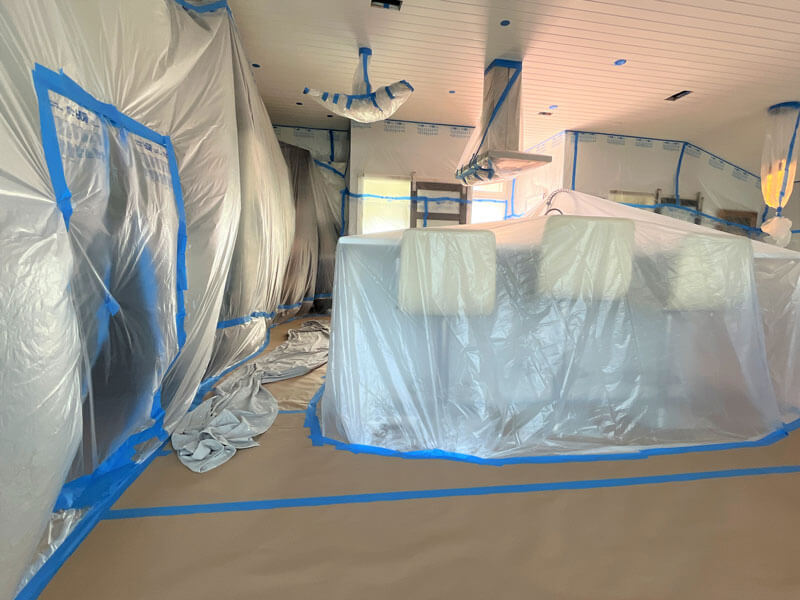Painting is an easy and cost-effective way to transform the look of a room or exterior surface. However, it’s essential to understand that the quality of the paint job largely depends on the preparation work. One of the most critical steps in preparing for painting is covering and protecting the surfaces you don’t want to paint. This includes floors, furniture, fixtures, and other areas that could be affected by paint drips or splatters.
How to protect floor when painting?
Floors and furniture should be covered and protected when painting. I would like to share with you which plastic and masking paper to choose for your project.
Today, you can be overwhelmed by the wide range of sizes and thicknesses of blanket coverings on the shelves of DIY stores and specialty shops. Thinner and cheaper coverings are recommended for protecting furniture, while thicker, “slip-resistant” or “ladder-resistant” types are recommended for floors, as they are harder to tear and can withstand the strain.

.08 millimeter thick plastic blanket film is the right choice!
Let’s dive into the details for a moment. The popular option of blanket film is about .04 millimeters thick. Although it is cheaper, it is flimsy and tears faster. Therefore, I recommend the slightly more expensive but more durable .08 millimeter film for floors. To be on the safe side, you should also fix a soft material or coating to the bottom of the ladder an additional step to prevent tearing.
In this video I show you how to combine different flooring protective materials, in this case a plastic and canvas drop cloth.
For flawless protection, blanket paper is better!
Not recommended for furniture, blanket paper an excellent choice to perfectly protect the floor from dripping paint. It is usually available in rolls of 65-85 feet and can be easily unrolled and rolled up after painting.
It is less floppy in air drafts, and it does not tear as easily under the weight of climbing a ladder. However, it is easy to cut to size and fold. Blanket paper is more environmentally friendly than plastic sheeting, but unfortunately it is less water resistant. Paint drips or spills do not penetrate the paper at all, but a spilt bucket of water will soak through quickly. As a solution, you can buy more expensive but better-quality blanket paper that has a water-repellent backing that completely prevents moisture from seeping through. So I must reiterate -it is worth choosing higher quality over low cost. It will still be cheaper than having to replace the tiles or flooring panels after painting.
In this video, you can see how we cut and glued protective paper to the floor, the chandelier fan and the window panes.
I recommend using a plastic to cover furniture
Since furniture only needs to be pushed into the middle of the room to create space for the walls, use the thinner, inexpensive .04 millimeter thick plastic film – just be sure to tape up any gaps around the furniture tightly.
A conventional masking film must first be unfolded, fitted to the surface to be protected and secured with adhesive tape to prevent gaps. However, there are now also adhesive strip plastic films. These are very practical and can be used in many places more quickly.
It is not a very common choice, but blanket felt is also an option. It is strong and durable and can be reused. Blanket felt is more expensive, but in the long run it saves you time and effort. This is also a great option if you are painting multiple rooms.

Recycling of plastic wrap or paper
It is not worth reusing plastic or paper coverings. Besides the fact that it may only have small tears at the end of your project, the dried paint will flake off along with dirt and dust, which will be very difficult to clean up.
When painting outdoors, many people do not think of covering plants as well as fences, pavers and garden furniture- as it is almost impossible to remove paint from leaves and flowers without damaging the plant.
Why Covering and Protecting Before Painting Is Important:
- Saves time and money: By taking the time to cover and protect surfaces before painting, you can avoid costly mistakes that could require additional repairs or even a complete do-over. This can save you time and money in the long run.
- Prevents damage to surfaces: Paint can cause damage to surfaces that are not properly covered or protected. For example, paint drips can stain carpets or hardwood floors, while paint splatters can damage furniture and fixtures.
- Ensures a smooth finish: Covering and protecting surfaces helps to ensure that the paint adheres evenly and smoothly.

I hope I’ve helped you get started with a smooth and seamless renovation!
Frequently Asked Questions (FAQ)
FAQ 1: How can I prevent paint from seeping under the protective coverings?
To prevent paint from seeping under the protective coverings, ensure that the coverings are securely taped or weighted down. Additionally, avoid overloading the paintbrush or roller with excessive paint, as it can lead to drips and seepage.
FAQ 2: What should I do if paint spills on the floor?
If paint spills on the floor, it’s important to act quickly. Use a clean cloth or paper towel to blot up as much of the spilled paint as possible. Avoid spreading the paint further by gently dabbing instead of rubbing. Once the majority of the paint has been absorbed, clean the area with a suitable cleaner according to the type of flooring.
FAQ 3: Is it necessary to remove furniture from the room before painting?
It is highly recommended to remove furniture from the room before painting. This precautionary measure ensures that no paint accidentally splatters or spills on valuable or delicate items. If removing furniture is not feasible, make sure to cover them securely with drop cloths or plastic sheets.
FAQ 4: Can I reuse drop cloths and protective coverings for future painting projects?
Yes, you can reuse drop cloths and protective coverings for future painting projects. Before reuse, inspect them for any paint residue or damage. If they are in good condition, clean them according to the manufacturer’s instructions and store them properly for future use.
FAQ 5: Should I use a specific type of protective covering for different types of flooring?
Yes, it is recommended to consider the type of flooring when choosing a protective covering. For hardwood or laminate floors, use materials that are non-abrasive and won’t scratch the surface. For carpets, opt for heavier-duty coverings that provide effective barrier protection against paint spills.
FAQ 6: Are there any alternatives to traditional protective coverings?
Yes, there are alternative options to traditional protective coverings. Some people choose to use rosin paper, which is a heavy-duty construction paper, as an affordable alternative. Another option is using adhesive-backed plastic film that adheres directly to the floor and can be easily removed after the painting project is completed.
Conclusion
Protecting the floor when painting is an important aspect of any painting project. By taking the necessary precautions and using suitable protective coverings, you can ensure that your floor remains unharmed and in pristine condition. Whether you choose drop cloths, masking tape and plastic sheets, or other methods, following the guidelines outlined in this article will help you achieve a successful and mess-free painting experience.
Remember, proper floor protection not only preserves the aesthetics of your space but also saves you time and effort in cleaning up paint spills or stains. So, before you embark on your next painting project, make sure to prioritize floor protection and enjoy the transformative power of a fresh coat of paint.
If you want your furniture, home decorations and appliances to be free of damage or stains but do not want to bother with the proper protection applications yourself, feel free to call a professional painter, to help with your project. 1(904)217-9681
I have more than ten years of experience in Saint Augustine with professional tools and a fast delivery!
I perform a quick on-site survey with my team and give you a personalized quote.
Related blog articles:
Three Steps to a Successful Home Renovation
Wall Painting Tools And Equipment – What You Will Need For Interior Wall Painting
How Can I Clean Walls With Flat Paint?
What to do if paint is spilled? – spilt paint strain


